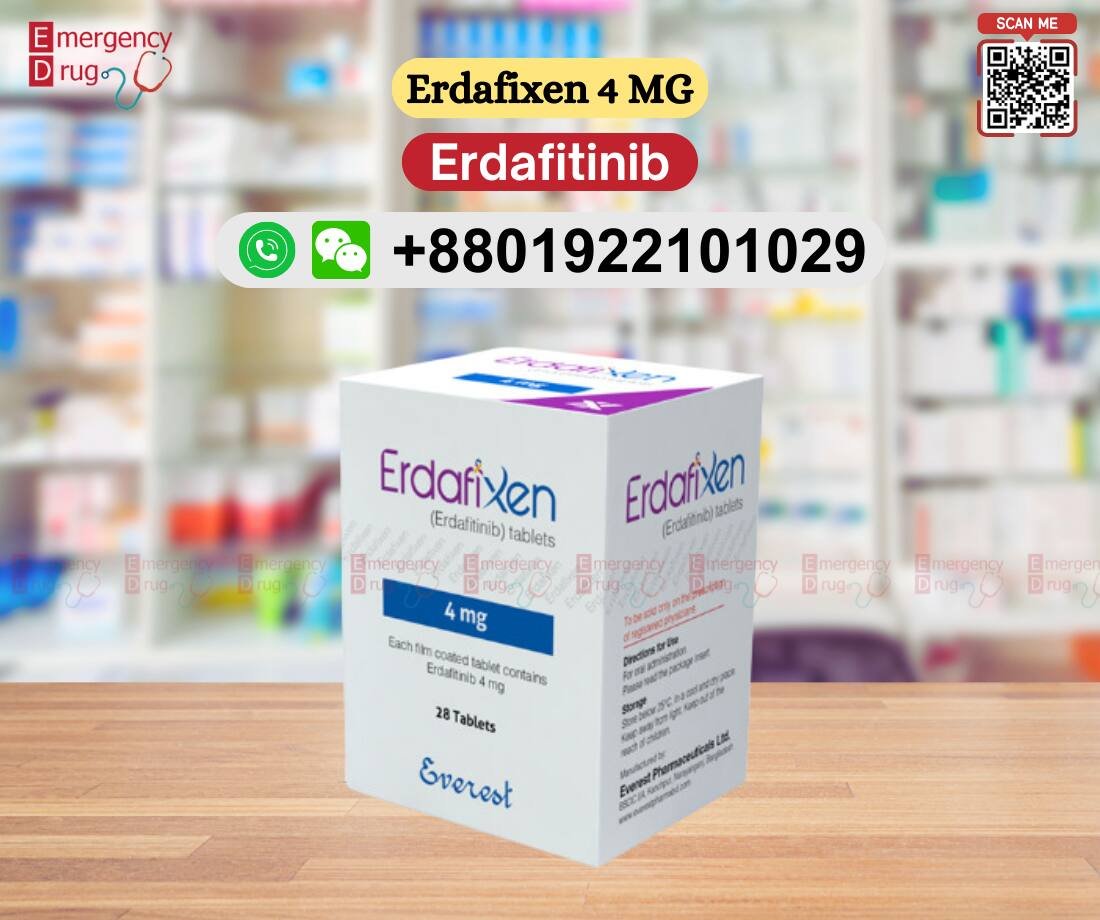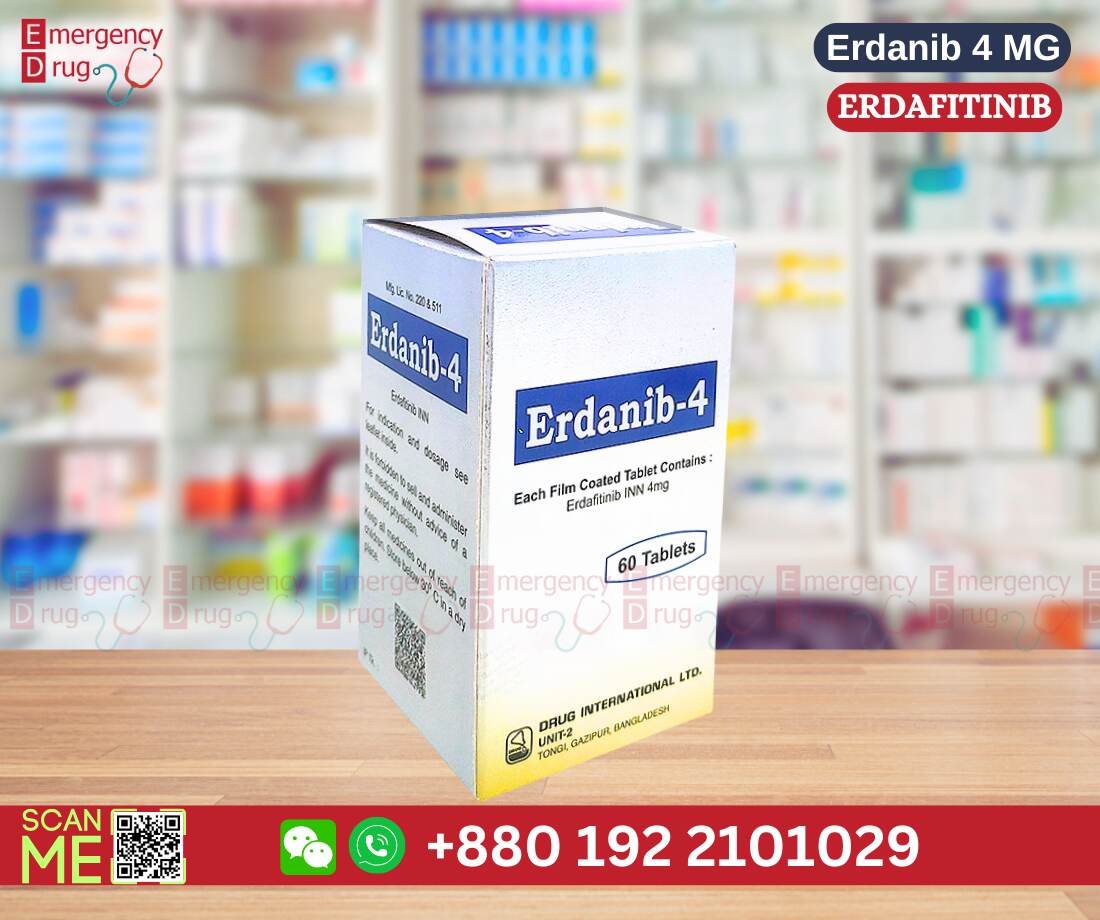Erdafitinib
Erdafitinib
Showing all 2 results
Is Erdafitinib the Game-Changer in Cancer Care?
Erdafitinib has advanced or metastatic urothelial carcinoma (UC), a malignant tumor of the urinary system, including bladder cancer.
Erdafitinib has been primarily approved for locally advanced or metastatic urothelial carcinoma (UC), a malignant tumor of the urinary system, including bladder cancer. It is indicated for use in patients whose tumors have FGFR2 or FGFR3 genetic alterations vulnerable to this form of treatment. These modifications are detected by means of genetic testing, so that the treatment is directed at patients most likely to profit from it.
Core Indication
-
Approved For:
Locally advanced or metastatic urothelial carcinoma (UC)
(Includes cancers of the bladder, ureters, renal pelvis, and urethra). -
Patient Selection:
Mandatory FGFR2/FGFR3 genetic alterations (mutations or fusions) confirmed via biomarker testing.
Mechanism of Action
-
FGFR Inhibitor: Blocks signaling through Fibroblast Growth Factor Receptors 2/3 (FGFR2/3).
-
Rationale: FGFR alterations drive tumor growth in ~15–20% of advanced UC cases. Inhibition halts cancer progression.
Biomarker Testing Requirement
-
Test Type: Genetic analysis of tumor tissue (biopsy) or liquid biopsy (circulating tumor DNA).
-
Purpose: Identifies patients most likely to respond (precision medicine).
-
Key Alterations:
-
FGFR3 mutations (e.g., R248C, S249C)
-
FGFR2/3 fusions (e.g., FGFR3-TACC3).
-
Clinical Use Context
-
Typical Setting: After platinum-based chemotherapy failure (or if cisplatin-ineligible).
-
FDA Approval Timeline:
-
Accelerated approval (2019) based on response rate (ORR: 40%).
-
Full approval (2024) confirming survival benefit (median OS: 12.1 vs 7.8 months vs chemotherapy).
-
Dosing & Monitoring
| Aspect | Details |
|---|---|
| Starting Dose | 8 mg orally once daily |
| Dose Escalation | May increase to 9 mg/day if phosphate <5.5 mg/dL and no severe side effects |
| Critical Monitoring | Serum phosphate (target: 5.5–7.0 mg/dL) – adjust dose or use phosphate binders |
| Ocular Exams | Baseline and every 2 months (risk of retinal detachment/corneal ulcers) |
Common Side Effects
-
Hyperphosphatemia (77%): Managed with diet/low-phosphate binders.
-
Ocular Toxicity (56%): Dry eyes, blurred vision, retinal disorders.
-
Fatigue (54%), Nail Changes (46%), Diarrhea (43%), Altered Taste (40%).
-
Stomatitis (33%), Palmar-Plantar Erythrodysesthesia (hand-foot syndrome, 26%).
Key Considerations
-
Contraindications: Hypersensitivity to erdafitinib; avoid in FGFR wild-type tumors.
-
Drug Interactions:
-
Avoid strong CYP3A4 inducers (e.g., rifampin, carbamazepine) – ↓ efficacy.
-
Use caution with CYP3A4 inhibitors (e.g., ketoconazole) – ↑ toxicity.
-
-
Pregnancy: Contraindicated (embryo-fetal toxicity; verify pregnancy status pre-treatment).
Clinical Efficacy & Limitations
-
Response Rate: 40% (including 3% complete responses).
-
Median Duration of Response: 6 months.
-
Resistance: Most tumors develop resistance within 6–12 months (e.g., FGFR gatekeeper mutations).
-
No Survival Benefit in FGFR Wild-Type Tumors: Confirm alterations before use.
Patient Counseling Points
-
Biomarker Testing is Mandatory – Confirm FGFR2/3 alterations before starting.
-
Phosphate Management: Report muscle cramps/numbness (hyperphosphatemia sign).
-
Eye Care: Use lubricating eye drops; report vision changes immediately.
-
Dosing Compliance: Take at the same time daily, with/without food.
-
Avoid OTC Supplements: Especially vitamin D/calcium without medical approval.
Summary
Erdafitinib is a precision oncology breakthrough for FGFR-altered advanced UC. Strict adherence to biomarker testing, phosphate monitoring, and ocular assessments is essential. Its role is firmly established post-chemotherapy, offering hope where conventional therapies fail.


